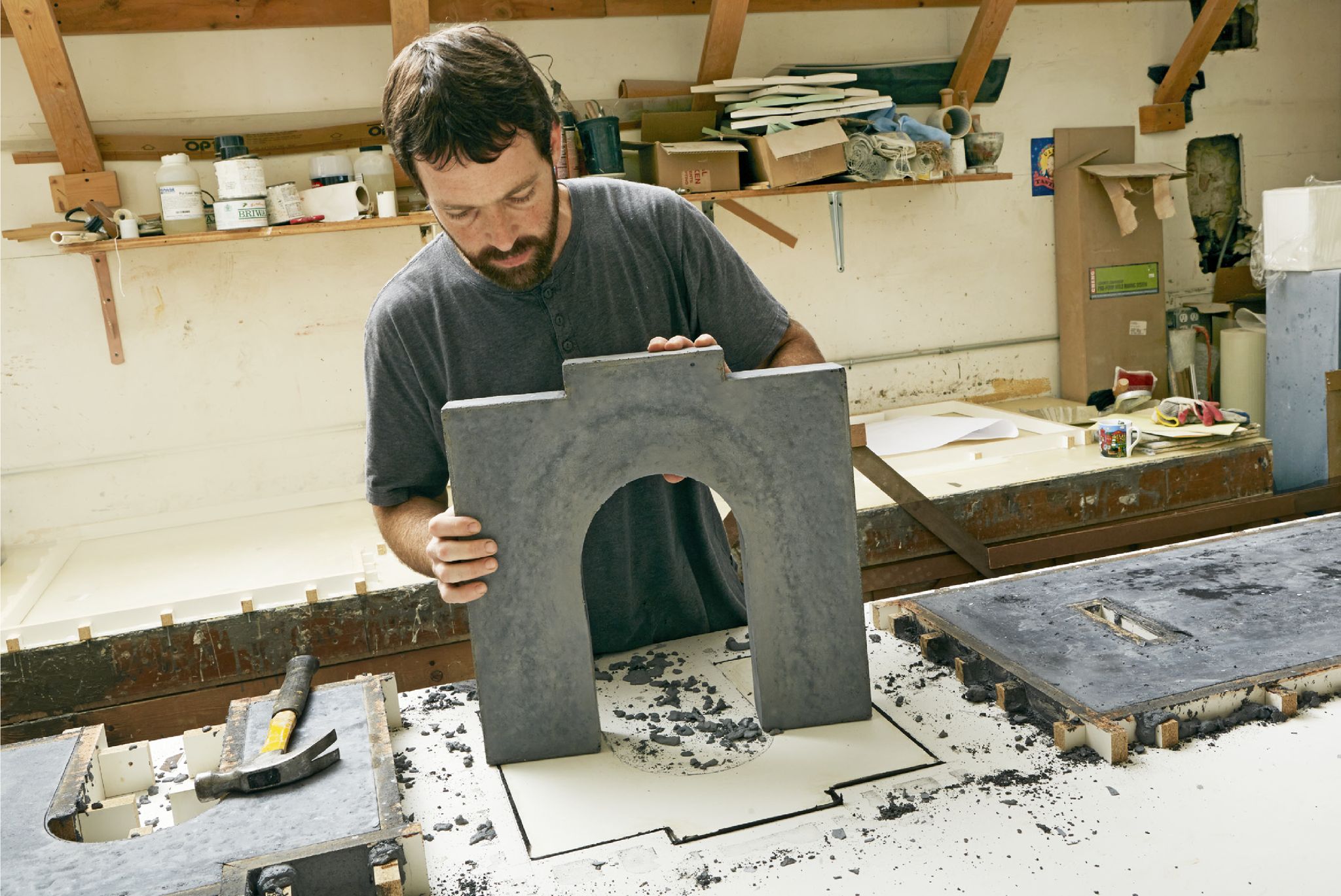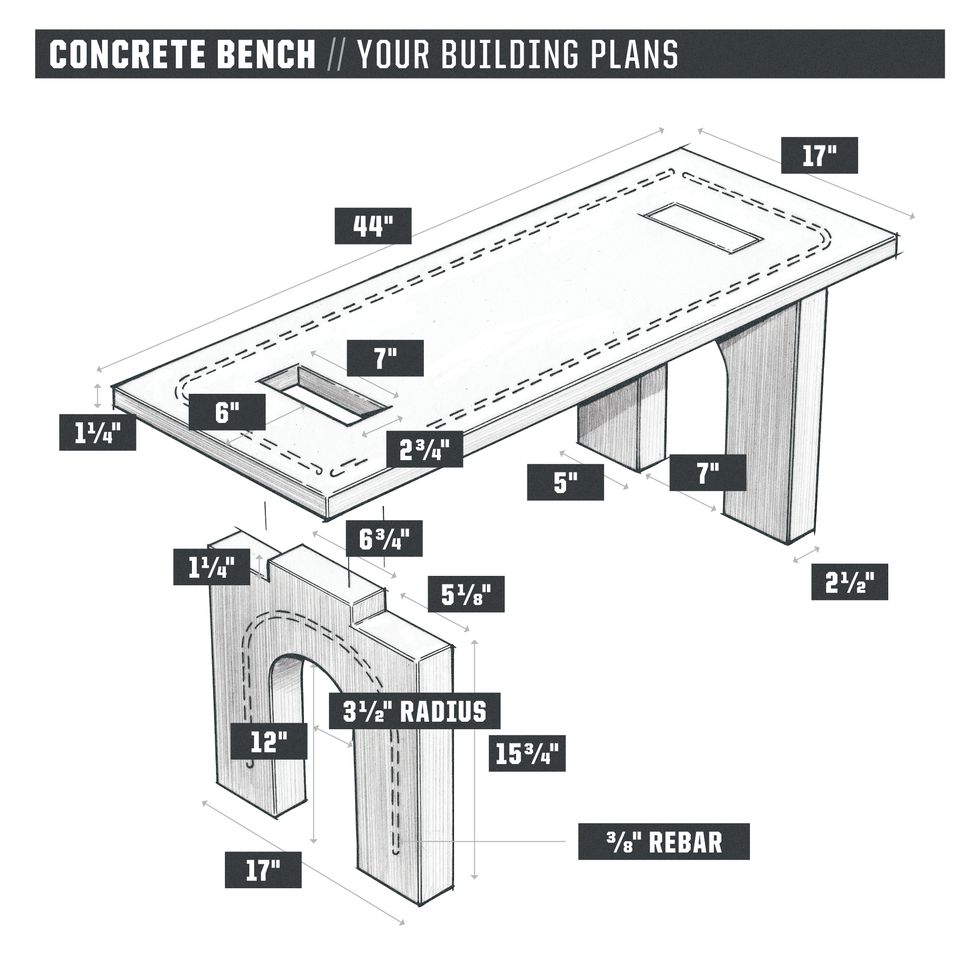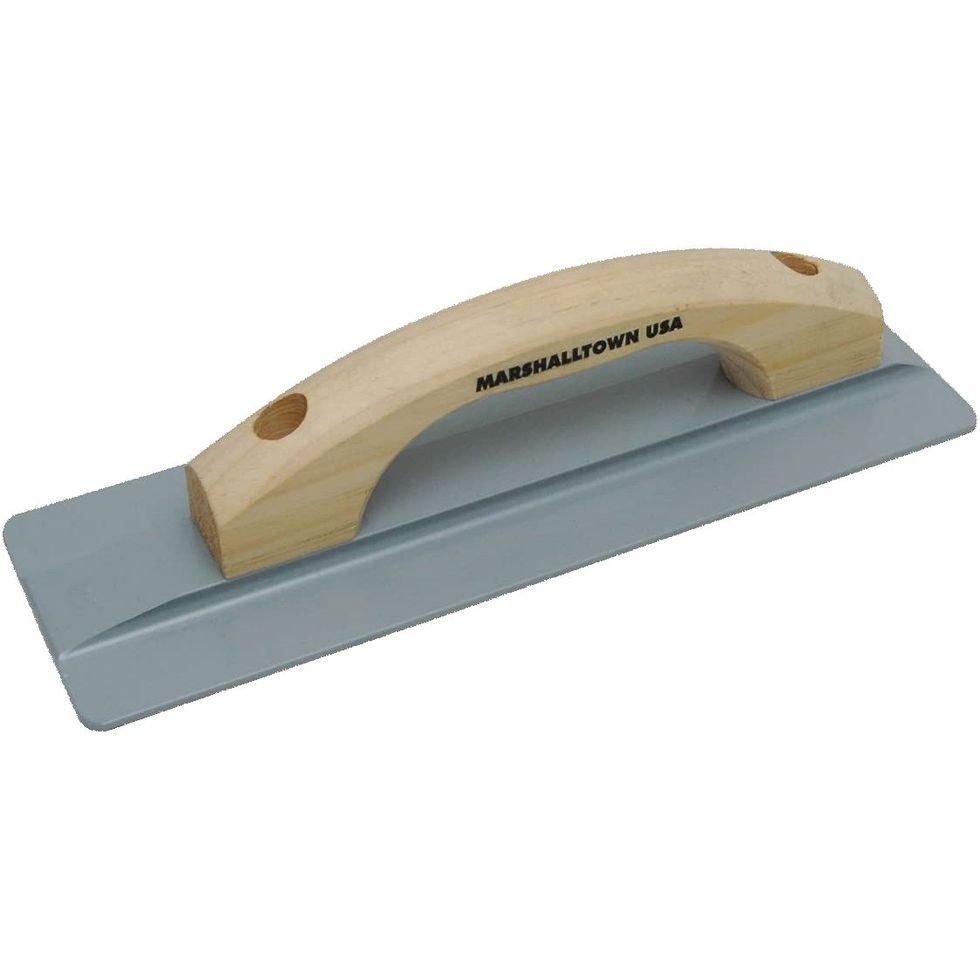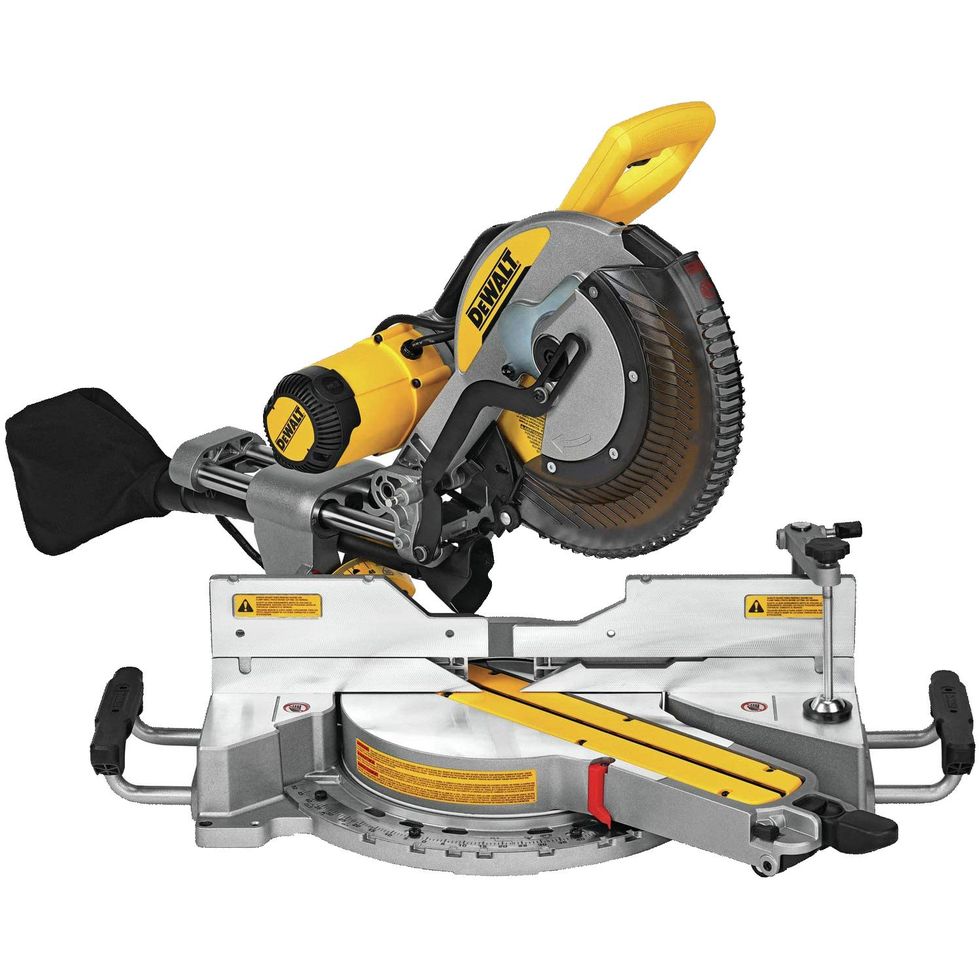Stone Cold Beautiful: How To Build a Concrete Bench (original) (raw)

Reed Young
![]()
POP Projects is a collection of new and classic projects from more than a century of Popular Mechanics_. Master skills, get tool recommendations, and, most importantly, build something of your very own._
Eric Weil, pictured above, once studied wood carving in Ghana, but nowadays it’s the urban textures of New York City that inspire his work. Weil runsBrooklyn-based Oso Industries, which crafts furniture primarily out of concrete. It’s a material he values for its appearance, adaptability, and strength.
We commissioned Weil to produce a bench project for PM readers that is less complicated than it looks: Three slabs combine with elegant through-tenon joinery, so you won’t need any connecting hardware. The key is to fabricate accurate molds; then just mix up a batch of concrete and pour.
These Tools Will Help
Marshalltown 24-Inch Hand Float
Now 100% Off
DeWalt Table Saw
Now 29% Off
DeWalt Sliding Compound Miter Saw
Now 38% Off
Bon Tool 5-Gallon Plastic Bucket
WORX Cordless Drill and Driver
Plans and Materials

George Retseck/Ash Bartholomew
Build the Mold

This bench relies on well-formed mortise and tenons for strength, so assemble the molds with care. Create them as you would a piece of furniture. Make the sides and support blocks by ripping the melamine particle board into strips with a table saw and cutting them to length with a miter saw according to the materials list.
Lay the remaining particle-board on a flat, level surface and use a pencil to trace the outline of the bench parts. Arrange the parts with enough surrounding space to allow for the support blocks.
Attach the side pieces along the layout lines with hot glue. Miter the inside corners of the leg molds where the shoulders meet the ten-ons, then glue support blocks 4 to 6 inches apart around the perimeter of each mold [1]. To create the curved sections of the leg molds, install a block on the inside of each curve and bend plexiglass around it; make sure the straight sections of the plexiglass extend past the bottom of each leg.
The bench top’s mortises are created from two rectangular knockouts. Assemble with hot glue, and wrap them in foam packaging material and a layer of shipping tape. This makes them easier to remove after the concrete has set, it also provides just enough wiggle room to make final assembly a snap. Trim the foam and the tape around the knockout [2].
Next, apply caulk neatly along the seams. Black silicone caulk is easy to see against the white melamine and can be cleaned up with soapy water. Apply clear paste wax to all inside and top-edge surfaces [3]. Buff the wax with a soft cloth, but take care not to damage the molds.
Prepare the Concrete

Concrete has excellent compression qualities, which means it’s difficult to crush. However, it lacks tensile strength when used across a span, so you’ll need to reinforce your bench with rebar. Cut 3⁄8-inch rebar with bolt cutters, and bend the pieces into shape by hand or with a rebar bender.
Mix enough concrete to form both legs.

Staff
⚠️ Many of the ingredients are toxic and irritate the skin, so wear a cartridge respirator, eye protection, and gloves.
Use a calibrated mixing container to measure the cold water, acrylic additive, and pigment, and combine them in a 20-gallon trash can. Next, measure the cement and aggregates (the sand and gravel) into separate 5-gallon buckets. Add half the cement to the liquid mixture, and combine using an electric drill and a universal mixing paddle. Then add half the aggregates; mix well. Add the remaining cement; mix again. Add the remain-ing aggregates, and mix once more [4]. The concrete should have the consistency of yogurt.
Immediately pour enough to fill each leg mold to within 1-inch of the top, working it into the corners. Once the concrete starts stiffening, set the rebar into each mold [5]. Top up with the remain-ing mixture, screed the surface, and flatten with a trowel [6]. Repeat for the bench top using the identical amount of concrete mix. Cover the parts with plastic sheeting, and leave to cure for a couple of days.
Assemble the Bench

Free the parts by knocking away the molds with a hammer [7]. Smooth everything with a sanding block, starting with 120-grit paper and moving toward 320-grit [8]. Set the legs upright and squeeze silicone caulk onto the shoulders [9]. Get help positioning the bench top onto the legs.
Tape around the mortise and tenons, and fill the voids with a sanded grout mixture, adding pigment to match the bench color if desired [10]. After the grout has cured, remove the tape and clean with a damp sponge.
Now your backyard has officially been upgraded.

Reed Young




